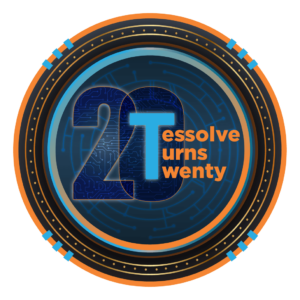The Internet of Things (IoT) has become integral to modern-day devices, including smart homes and wearable devices. It’s changed how we interact with technology. Over the years, devices have continuously evolved.
However, it won’t be possible without a versatile PCB hardware design. The advancement in PCB hardware allowed for better power optimization, extending battery life in IoT devices.
For this, developers have included power management techniques, such as sleep gates and power gating, in their design. In addition, wireless communication protocols, such as Bluetooth, Zigbee, Wi-Fi, etc., have also improved the connectivity in IoT devices. In this blog, we will delve deeper into the advancement in PCB hardware design, which has improved IoT devices’ connectivity and power efficiency.
Advancements in PCB Design for IoT Devices
Miniaturization and Component Integration
Miniaturization of PCB enabled manufacturing for new-age IoT devices, allowing integration of various electronic components in a compact space. This has made smaller, lighter, and more portable gadgets possible.
This also allows for integrating more components, paving the way for adding new features and functionalities in electronic devices. It aids designers in improving the performance of devices without increasing the devices’ size.
High-Density Interconnects (HDI)
HDI technology helps create compact circuit boards with lots of connections. This is achieved through techniques like microvias and fine-line traces. The increased density supports the integration of more components, contributing to the device’s overall efficiency.
Flexible and Rigid-Flex PCBs
Flexible PCBs are made of flexible materials, enabling them to bend or fold. Rigid-flex PCBs combine flexible and rigid substrates, balancing flexibility and structural integrity. These designs are crucial for IoT devices that need to fit into unconventional spaces or have moving parts.
Multilayer PCBs
Multilayer PCBs consist of more than two conductive layers separated by insulating material. The additional layers provide more pathways for routing signals, reducing electromagnetic interference and crosstalk. This is essential for IoT devices with complex functionalities that require many connections.
Embedded Passive and Active Components
Embedding components directly into the PCB involves placing them within the substrate layers. This allows for more compact and space-efficient design, aiding in advancing IoT devices. This also minimizes the lengths of traces and leads, improving signal integrity.
Connectivity Improvement in IoT Devices
Enhanced Wireless Connectivity
Advancements in PCB board design paved the way for mounting advanced antenna designs, including planar and chip antennas. This led to improvement in signal reception and transmission.
Moreover, it also enables placement optimization, which is crucial to mitigate interference, improving the range of communication. In addition, it also allowed RF technology into PCB design, paving the way for the betterment of overall wireless performance.
IoT Communication Protocols
The advancement of PCB design paved the way for using communication protocols like MQTT and CoAP. These protocols facilitate low overhead and high data transfer rates, which are essential for IoT devices. Moreover, these communication protocols also aid in extending the battery life.
Edge Computing Integration
Integrating edge computing capabilities on the PCB involves incorporating microprocessors or microcontrollers capable of local data processing. This reduces the need for constant communication with central servers, decreasing latency and bandwidth requirements.
High-Density Interconnects (HDI)
HDI technology helps create compact circuit boards with lots of connections. This is achieved through techniques like microvias and fine-line traces. The increased density supports the integration of more components, contributing to the device’s overall efficiency.
Flexible and Rigid-Flex PCBs
Flexible PCBs are made of flexible materials, enabling them to bend or fold. Rigid-flex PCBs combine flexible and rigid substrates, balancing flexibility and structural integrity. These designs are crucial for IoT devices that need to fit into unconventional spaces or have moving parts.
Multilayer PCBs
Multilayer PCBs consist of more than two conductive layers separated by insulating material. The additional layers provide more pathways for routing signals, reducing electromagnetic interference and crosstalk. This is essential for IoT devices with complex functionalities that require many connections.
Embedded Passive and Active Components
Embedding components directly into the PCB involves placing them within the substrate layers. This allows for more compact and space-efficient design, aiding in advancing IoT devices. This also minimizes the lengths of traces and leads, improving signal integrity.
Power Efficiency Enhancements
Low-Power Components Integration
Reduced Power Consumption: Newer generations of microcontrollers, sensors, and electronic components often have lower power consumption profiles. Integrating these low-power components into the PCB design reduces the device’s overall power requirements.
Advanced Process Technologies: Advancements in semiconductor manufacturing processes allow for the creation of components with smaller feature sizes and improved energy efficiency. This enables the integration of more energy-efficient components on the PCB.
Advanced Power Management ICs
Sleep Modes and Power Gating: PMICs with sophisticated power management features enable devices to enter low-power states during idle periods. Sleep modes and power gating techniques help minimize power consumption when the device is not actively processing data.
Efficient Power Conversion: Modern PMICs incorporate high-efficiency voltage regulators and power converters, minimizing energy losses during conversion.
Also Read: Tera: A Robust Tessolve’s Product to Streamline Vehicle Networking
The Bottom Line!
As IoT devices keep getting better, there’s a demand for more advanced PCB design hardware. These advancements led to smaller, power-efficient, portable, and reliable IoT devices across various industries.
As IoT continuously grows, there will be a constant challenge for a compatible PCB board design. That’s where Tessolve offers tailored PCB design solutions. We ensure that every industry has tailored solutions according to their needs.



